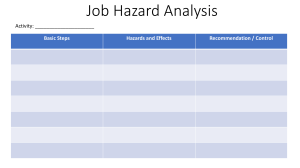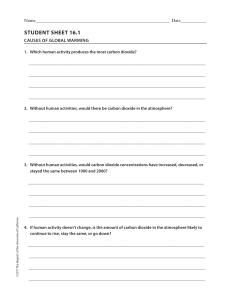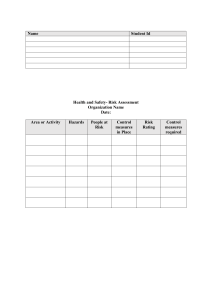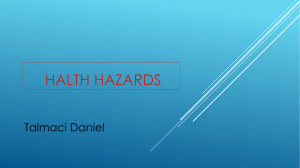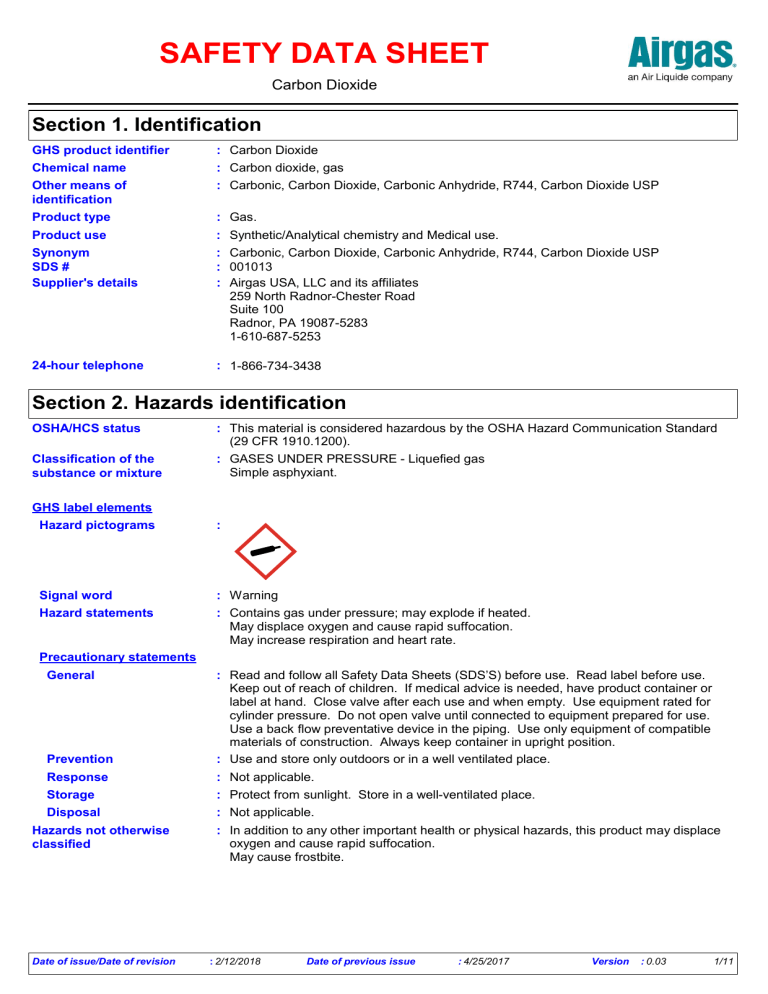
SAFETY DATA SHEET Carbon Dioxide Section 1. Identification GHS product identifier : Carbon Dioxide Chemical name : Carbon dioxide, gas Other means of identification : Carbonic, Carbon Dioxide, Carbonic Anhydride, R744, Carbon Dioxide USP Product type : Gas. Product use : Synthetic/Analytical chemistry and Medical use. Synonym SDS # Supplier's details : Carbonic, Carbon Dioxide, Carbonic Anhydride, R744, Carbon Dioxide USP : 001013 : Airgas USA, LLC and its affiliates 259 North Radnor-Chester Road Suite 100 Radnor, PA 19087-5283 1-610-687-5253 24-hour telephone : 1-866-734-3438 Section 2. Hazards identification OSHA/HCS status Classification of the substance or mixture : This material is considered hazardous by the OSHA Hazard Communication Standard (29 CFR 1910.1200). : GASES UNDER PRESSURE - Liquefied gas Simple asphyxiant. GHS label elements Hazard pictograms : Signal word : Warning Hazard statements : Contains gas under pressure; may explode if heated. May displace oxygen and cause rapid suffocation. May increase respiration and heart rate. Precautionary statements General Prevention : Read and follow all Safety Data Sheets (SDS’S) before use. Read label before use. Keep out of reach of children. If medical advice is needed, have product container or label at hand. Close valve after each use and when empty. Use equipment rated for cylinder pressure. Do not open valve until connected to equipment prepared for use. Use a back flow preventative device in the piping. Use only equipment of compatible materials of construction. Always keep container in upright position. : Use and store only outdoors or in a well ventilated place. Response : Not applicable. Storage : Protect from sunlight. Store in a well-ventilated place. Disposal : Not applicable. Hazards not otherwise classified Date of issue/Date of revision : In addition to any other important health or physical hazards, this product may displace oxygen and cause rapid suffocation. May cause frostbite. : 2/12/2018 Date of previous issue : 4/25/2017 Version : 0.03 1/11 Carbon Dioxide Section 3. Composition/information on ingredients Substance/mixture : Substance Chemical name : Carbon dioxide, gas Other means of identification : Carbonic, Carbon Dioxide, Carbonic Anhydride, R744, Carbon Dioxide USP Product code : 001013 CAS number/other identifiers CAS number : 124-38-9 Ingredient name % CAS number Carbon Dioxide 100 124-38-9 Any concentration shown as a range is to protect confidentiality or is due to batch variation. There are no additional ingredients present which, within the current knowledge of the supplier and in the concentrations applicable, are classified as hazardous to health or the environment and hence require reporting in this section. Occupational exposure limits, if available, are listed in Section 8. Section 4. First aid measures Description of necessary first aid measures Eye contact Inhalation Skin contact Ingestion : Immediately flush eyes with plenty of water, occasionally lifting the upper and lower eyelids. Check for and remove any contact lenses. Continue to rinse for at least 10 minutes. Get medical attention if irritation occurs. : Remove victim to fresh air and keep at rest in a position comfortable for breathing. If not breathing, if breathing is irregular or if respiratory arrest occurs, provide artificial respiration or oxygen by trained personnel. It may be dangerous to the person providing aid to give mouth-to-mouth resuscitation. Get medical attention if adverse health effects persist or are severe. If unconscious, place in recovery position and get medical attention immediately. Maintain an open airway. Loosen tight clothing such as a collar, tie, belt or waistband. : Flush contaminated skin with plenty of water. Remove contaminated clothing and shoes. Get medical attention if symptoms occur. Wash clothing before reuse. Clean shoes thoroughly before reuse. : As this product is a gas, refer to the inhalation section. Most important symptoms/effects, acute and delayed Potential acute health effects Eye contact : No known significant effects or critical hazards. Inhalation : No known significant effects or critical hazards. Skin contact : No known significant effects or critical hazards. Frostbite Ingestion : Try to warm up the frozen tissues and seek medical attention. : As this product is a gas, refer to the inhalation section. Over-exposure signs/symptoms Eye contact : No specific data. Inhalation : No specific data. Skin contact : No specific data. Ingestion : No specific data. Indication of immediate medical attention and special treatment needed, if necessary Notes to physician Specific treatments Date of issue/Date of revision : Treat symptomatically. Contact poison treatment specialist immediately if large quantities have been ingested or inhaled. : No specific treatment. : 2/12/2018 Date of previous issue : 4/25/2017 Version : 0.03 2/11 Carbon Dioxide Section 4. First aid measures Protection of first-aiders : No action shall be taken involving any personal risk or without suitable training. It may be dangerous to the person providing aid to give mouth-to-mouth resuscitation. See toxicological information (Section 11) Section 5. Fire-fighting measures Extinguishing media Suitable extinguishing media Unsuitable extinguishing media : Use an extinguishing agent suitable for the surrounding fire. : None known. Specific hazards arising from the chemical : Contains gas under pressure. In a fire or if heated, a pressure increase will occur and the container may burst or explode. Hazardous thermal decomposition products : Decomposition products may include the following materials: carbon dioxide carbon monoxide Special protective actions for fire-fighters : Promptly isolate the scene by removing all persons from the vicinity of the incident if there is a fire. No action shall be taken involving any personal risk or without suitable training. Contact supplier immediately for specialist advice. Move containers from fire area if this can be done without risk. Use water spray to keep fire-exposed containers cool. : Fire-fighters should wear appropriate protective equipment and self-contained breathing apparatus (SCBA) with a full face-piece operated in positive pressure mode. Special protective equipment for fire-fighters Section 6. Accidental release measures Personal precautions, protective equipment and emergency procedures For non-emergency personnel : No action shall be taken involving any personal risk or without suitable training. Evacuate surrounding areas. Keep unnecessary and unprotected personnel from entering. Avoid breathing gas. Provide adequate ventilation. Wear appropriate respirator when ventilation is inadequate. Put on appropriate personal protective equipment. For emergency responders : If specialized clothing is required to deal with the spillage, take note of any information in Section 8 on suitable and unsuitable materials. See also the information in "For nonemergency personnel". Environmental precautions : Ensure emergency procedures to deal with accidental gas releases are in place to avoid contamination of the environment. Inform the relevant authorities if the product has caused environmental pollution (sewers, waterways, soil or air). Methods and materials for containment and cleaning up Small spill : Immediately contact emergency personnel. Stop leak if without risk. Large spill : Immediately contact emergency personnel. Stop leak if without risk. Note: see Section 1 for emergency contact information and Section 13 for waste disposal. Section 7. Handling and storage Precautions for safe handling Protective measures Date of issue/Date of revision : Put on appropriate personal protective equipment (see Section 8). Contains gas under pressure. Avoid breathing gas. Do not puncture or incinerate container. Use equipment rated for cylinder pressure. Close valve after each use and when empty. Protect cylinders from physical damage; do not drag, roll, slide, or drop. Use a suitable hand truck for cylinder movement. Avoid contact with eyes, skin and clothing. Empty containers retain product residue and can be hazardous. : 2/12/2018 Date of previous issue : 4/25/2017 Version : 0.03 3/11 Carbon Dioxide Section 7. Handling and storage Advice on general occupational hygiene Conditions for safe storage, including any incompatibilities : Eating, drinking and smoking should be prohibited in areas where this material is handled, stored and processed. Workers should wash hands and face before eating, drinking and smoking. Remove contaminated clothing and protective equipment before entering eating areas. See also Section 8 for additional information on hygiene measures. : Store in accordance with local regulations. Store in a segregated and approved area. Store away from direct sunlight in a dry, cool and well-ventilated area, away from incompatible materials (see Section 10). Cylinders should be stored upright, with valve protection cap in place, and firmly secured to prevent falling or being knocked over. Cylinder temperatures should not exceed 52 °C (125 °F). Keep container tightly closed and sealed until ready for use. See Section 10 for incompatible materials before handling or use. Section 8. Exposure controls/personal protection Control parameters Occupational exposure limits Ingredient name Exposure limits Carbon Dioxide ACGIH TLV (United States, 3/2017). Oxygen Depletion [Asphyxiant]. STEL: 54000 mg/m³ 15 minutes. STEL: 30000 ppm 15 minutes. TWA: 9000 mg/m³ 8 hours. TWA: 5000 ppm 8 hours. NIOSH REL (United States, 10/2016). STEL: 54000 mg/m³ 15 minutes. STEL: 30000 ppm 15 minutes. TWA: 9000 mg/m³ 10 hours. TWA: 5000 ppm 10 hours. OSHA PEL (United States, 6/2016). TWA: 9000 mg/m³ 8 hours. TWA: 5000 ppm 8 hours. OSHA PEL 1989 (United States, 3/1989). STEL: 54000 mg/m³ 15 minutes. STEL: 30000 ppm 15 minutes. TWA: 18000 mg/m³ 8 hours. TWA: 10000 ppm 8 hours. Appropriate engineering controls : Good general ventilation should be sufficient to control worker exposure to airborne contaminants. Environmental exposure controls : Emissions from ventilation or work process equipment should be checked to ensure they comply with the requirements of environmental protection legislation. In some cases, fume scrubbers, filters or engineering modifications to the process equipment will be necessary to reduce emissions to acceptable levels. Individual protection measures Hygiene measures Eye/face protection : Wash hands, forearms and face thoroughly after handling chemical products, before eating, smoking and using the lavatory and at the end of the working period. Appropriate techniques should be used to remove potentially contaminated clothing. Wash contaminated clothing before reusing. Ensure that eyewash stations and safety showers are close to the workstation location. : Safety eyewear complying with an approved standard should be used when a risk assessment indicates this is necessary to avoid exposure to liquid splashes, mists, gases or dusts. If contact is possible, the following protection should be worn, unless the assessment indicates a higher degree of protection: safety glasses with sideshields. Skin protection Date of issue/Date of revision : 2/12/2018 Date of previous issue : 4/25/2017 Version : 0.03 4/11 Carbon Dioxide Section 8. Exposure controls/personal protection Hand protection Body protection Other skin protection Respiratory protection : Chemical-resistant, impervious gloves complying with an approved standard should be worn at all times when handling chemical products if a risk assessment indicates this is necessary. Considering the parameters specified by the glove manufacturer, check during use that the gloves are still retaining their protective properties. It should be noted that the time to breakthrough for any glove material may be different for different glove manufacturers. In the case of mixtures, consisting of several substances, the protection time of the gloves cannot be accurately estimated. : Personal protective equipment for the body should be selected based on the task being performed and the risks involved and should be approved by a specialist before handling this product. : Appropriate footwear and any additional skin protection measures should be selected based on the task being performed and the risks involved and should be approved by a specialist before handling this product. : Based on the hazard and potential for exposure, select a respirator that meets the appropriate standard or certification. Respirators must be used according to a respiratory protection program to ensure proper fitting, training, and other important aspects of use. Respirator selection must be based on known or anticipated exposure levels, the hazards of the product and the safe working limits of the selected respirator. Section 9. Physical and chemical properties Appearance Physical state : Gas. [Compressed gas.] Color : Colorless. Odor : Odorless. : Not available. Odor threshold pH Melting point : Not available. : Sublimation temperature: -79°C (-110.2 to °F) Boiling point Critical temperature : Not available. : 30.85°C (87.5°F) Flash point : [Product does not sustain combustion.] Evaporation rate : Not available. Flammability (solid, gas) : Not available. Lower and upper explosive (flammable) limits Vapor pressure Vapor density : Not available. 3 : 830 (psig) : 1.53 (Air = 1) Specific Volume (ft /lb) : 8.7719 Gas Density (lb/ft 3) : 0.114 Relative density : Not applicable. Solubility : Not available. Solubility in water : Not available. Partition coefficient: noctanol/water : 0.83 Auto-ignition temperature : Not available. Decomposition temperature : Not available. Viscosity : Not applicable. Flow time (ISO 2431) : Not available. Molecular weight : 44.01 g/mole Date of issue/Date of revision : 2/12/2018 Liquid Density@BP: Solid density = 97.5 lb/ft3 (1562 kg/m3) Date of previous issue : 4/25/2017 Version : 0.03 5/11 Carbon Dioxide Section 10. Stability and reactivity Reactivity : No specific test data related to reactivity available for this product or its ingredients. Chemical stability : The product is stable. Possibility of hazardous reactions : Under normal conditions of storage and use, hazardous reactions will not occur. Conditions to avoid : No specific data. Incompatible materials : No specific data. Hazardous decomposition products : Under normal conditions of storage and use, hazardous decomposition products should not be produced. Hazardous polymerization : Under normal conditions of storage and use, hazardous polymerization will not occur. Section 11. Toxicological information Information on toxicological effects Acute toxicity Not available. Irritation/Corrosion Not available. Sensitization Not available. Mutagenicity Not available. Carcinogenicity Not available. Reproductive toxicity Not available. Teratogenicity Not available. Specific target organ toxicity (single exposure) Not available. Specific target organ toxicity (repeated exposure) Not available. Aspiration hazard Not available. Information on the likely routes of exposure : Not available. Potential acute health effects Eye contact : No known significant effects or critical hazards. Inhalation : No known significant effects or critical hazards. Skin contact : No known significant effects or critical hazards. Date of issue/Date of revision : 2/12/2018 Date of previous issue : 4/25/2017 Version : 0.03 6/11 Carbon Dioxide Section 11. Toxicological information Ingestion : As this product is a gas, refer to the inhalation section. Symptoms related to the physical, chemical and toxicological characteristics Eye contact : No specific data. Inhalation : No specific data. Skin contact : No specific data. Ingestion : No specific data. Delayed and immediate effects and also chronic effects from short and long term exposure Short term exposure Potential immediate : Not available. effects Potential delayed effects : Not available. Long term exposure Potential immediate effects : Not available. Potential delayed effects : Not available. Potential chronic health effects Not available. General : No known significant effects or critical hazards. Carcinogenicity : No known significant effects or critical hazards. Mutagenicity : No known significant effects or critical hazards. Teratogenicity : No known significant effects or critical hazards. Developmental effects : No known significant effects or critical hazards. Fertility effects : No known significant effects or critical hazards. Numerical measures of toxicity Acute toxicity estimates Not available. Section 12. Ecological information Toxicity Not available. Persistence and degradability Not available. Bioaccumulative potential Product/ingredient name LogPow BCF Potential Carbon Dioxide 0.83 - low Mobility in soil Soil/water partition coefficient (KOC) Other adverse effects Date of issue/Date of revision : Not available. : No known significant effects or critical hazards. : 2/12/2018 Date of previous issue : 4/25/2017 Version : 0.03 7/11 Carbon Dioxide Section 13. Disposal considerations Disposal methods : The generation of waste should be avoided or minimized wherever possible. Disposal of this product, solutions and any by-products should at all times comply with the requirements of environmental protection and waste disposal legislation and any regional local authority requirements. Dispose of surplus and non-recyclable products via a licensed waste disposal contractor. Waste should not be disposed of untreated to the sewer unless fully compliant with the requirements of all authorities with jurisdiction. Empty Airgas-owned pressure vessels should be returned to Airgas. Waste packaging should be recycled. Incineration or landfill should only be considered when recycling is not feasible. This material and its container must be disposed of in a safe way. Empty containers or liners may retain some product residues. Do not puncture or incinerate container. Section 14. Transport information DOT TDG Mexico IMDG IATA UN number UN1013 UN1013 UN1013 UN1013 UN1013 UN proper shipping name CARBON DIOXIDE CARBON DIOXIDE CARBON DIOXIDE CARBON DIOXIDE CARBON DIOXIDE Transport 2.2 hazard class(es) 2.2 2.2 2.2 2.2 Packing group - - - - - Environmental hazards No. No. No. No. No. “Refer to CFR 49 (or authority having jurisdiction) to determine the information required for shipment of the product.” Additional information DOT Classification TDG Classification : Limited quantity Yes. Quantity limitation Passenger aircraft/rail: 75 kg. Cargo aircraft: 150 kg. : Product classified as per the following sections of the Transportation of Dangerous Goods Regulations: 2.13-2.17 (Class 2). Explosive Limit and Limited Quantity Index 0.125 Passenger Carrying Road or Rail Index 75 IATA : Quantity limitation Passenger and Cargo Aircraft: 75 kg. Cargo Aircraft Only: 150 kg. Special precautions for user : Transport within user’s premises: always transport in closed containers that are upright and secure. Ensure that persons transporting the product know what to do in the event of an accident or spillage. Transport in bulk according to Annex II of MARPOL and the IBC Code : Not available. Section 15. Regulatory information U.S. Federal regulations Clean Air Act Section 112 (b) Hazardous Air Pollutants (HAPs) Date of issue/Date of revision : TSCA 8(a) CDR Exempt/Partial exemption: This material is listed or exempted. : Not listed : 2/12/2018 Date of previous issue : 4/25/2017 Version : 0.03 8/11 Carbon Dioxide Section 15. Regulatory information Clean Air Act Section 602 Class I Substances : Not listed Clean Air Act Section 602 Class II Substances : Not listed DEA List I Chemicals (Precursor Chemicals) : Not listed DEA List II Chemicals (Essential Chemicals) : Not listed SARA 302/304 Composition/information on ingredients No products were found. SARA 304 RQ : Not applicable. SARA 311/312 Classification : Refer to Section 2: Hazards Identification of this SDS for classification of substance. State regulations Massachusetts : This material is listed. New York : This material is not listed. New Jersey : This material is listed. Pennsylvania : This material is listed. International regulations Chemical Weapon Convention List Schedules I, II & III Chemicals Not listed. Montreal Protocol (Annexes A, B, C, E) Not listed. Stockholm Convention on Persistent Organic Pollutants Not listed. Rotterdam Convention on Prior Informed Consent (PIC) Not listed. UNECE Aarhus Protocol on POPs and Heavy Metals Not listed. Inventory list Australia : This material is listed or exempted. Canada : This material is listed or exempted. China : This material is listed or exempted. Europe : This material is listed or exempted. Japan : Japan inventory (ENCS): This material is listed or exempted. Japan inventory (ISHL): This material is listed or exempted. Malaysia : Not determined. New Zealand : This material is listed or exempted. Philippines : This material is listed or exempted. Republic of Korea : This material is listed or exempted. Taiwan : This material is listed or exempted. Thailand : Not determined. Turkey : This material is listed or exempted. United States : This material is listed or exempted. Viet Nam : Not determined. Date of issue/Date of revision : 2/12/2018 Date of previous issue : 4/25/2017 Version : 0.03 9/11 Carbon Dioxide Section 16. Other information Hazardous Material Information System (U.S.A.) / Health 1 Flammability 0 Physical hazards 3 Caution: HMIS® ratings are based on a 0-4 rating scale, with 0 representing minimal hazards or risks, and 4 representing significant hazards or risks. Although HMIS® ratings and the associated label are not required on SDSs or products leaving a facility under 29 CFR 1910.1200, the preparer may choose to provide them. HMIS® ratings are to be used with a fully implemented HMIS® program. HMIS® is a registered trademark and service mark of the American Coatings Association, Inc. The customer is responsible for determining the PPE code for this material. For more information on HMIS® Personal Protective Equipment (PPE) codes, consult the HMIS® Implementation Manual. National Fire Protection Association (U.S.A.) Flammability 0 Health 2 0 SA Instability/Reactivity Special Reprinted with permission from NFPA 704-2001, Identification of the Hazards of Materials for Emergency Response Copyright ©1997, National Fire Protection Association, Quincy, MA 02269. This reprinted material is not the complete and official position of the National Fire Protection Association, on the referenced subject which is represented only by the standard in its entirety. Copyright ©2001, National Fire Protection Association, Quincy, MA 02269. This warning system is intended to be interpreted and applied only by properly trained individuals to identify fire, health and reactivity hazards of chemicals. The user is referred to certain limited number of chemicals with recommended classifications in NFPA 49 and NFPA 325, which would be used as a guideline only. Whether the chemicals are classified by NFPA or not, anyone using the 704 systems to classify chemicals does so at their own risk. Procedure used to derive the classification Classification Justification GASES UNDER PRESSURE - Liquefied gas Expert judgment History Date of printing : 2/12/2018 Date of issue/Date of revision Date of previous issue : 2/12/2018 Version : 0.03 Key to abbreviations References : 4/25/2017 : ATE = Acute Toxicity Estimate BCF = Bioconcentration Factor GHS = Globally Harmonized System of Classification and Labelling of Chemicals IATA = International Air Transport Association IBC = Intermediate Bulk Container IMDG = International Maritime Dangerous Goods LogPow = logarithm of the octanol/water partition coefficient MARPOL = International Convention for the Prevention of Pollution From Ships, 1973 as modified by the Protocol of 1978. ("Marpol" = marine pollution) UN = United Nations : Not available. Notice to reader Date of issue/Date of revision : 2/12/2018 Date of previous issue : 4/25/2017 Version : 0.03 10/11 Carbon Dioxide Section 16. Other information To the best of our knowledge, the information contained herein is accurate. However, neither the above-named supplier, nor any of its subsidiaries, assumes any liability whatsoever for the accuracy or completeness of the information contained herein. Final determination of suitability of any material is the sole responsibility of the user. All materials may present unknown hazards and should be used with caution. Although certain hazards are described herein, we cannot guarantee that these are the only hazards that exist. Date of issue/Date of revision : 2/12/2018 Date of previous issue : 4/25/2017 Version : 0.03 11/11
